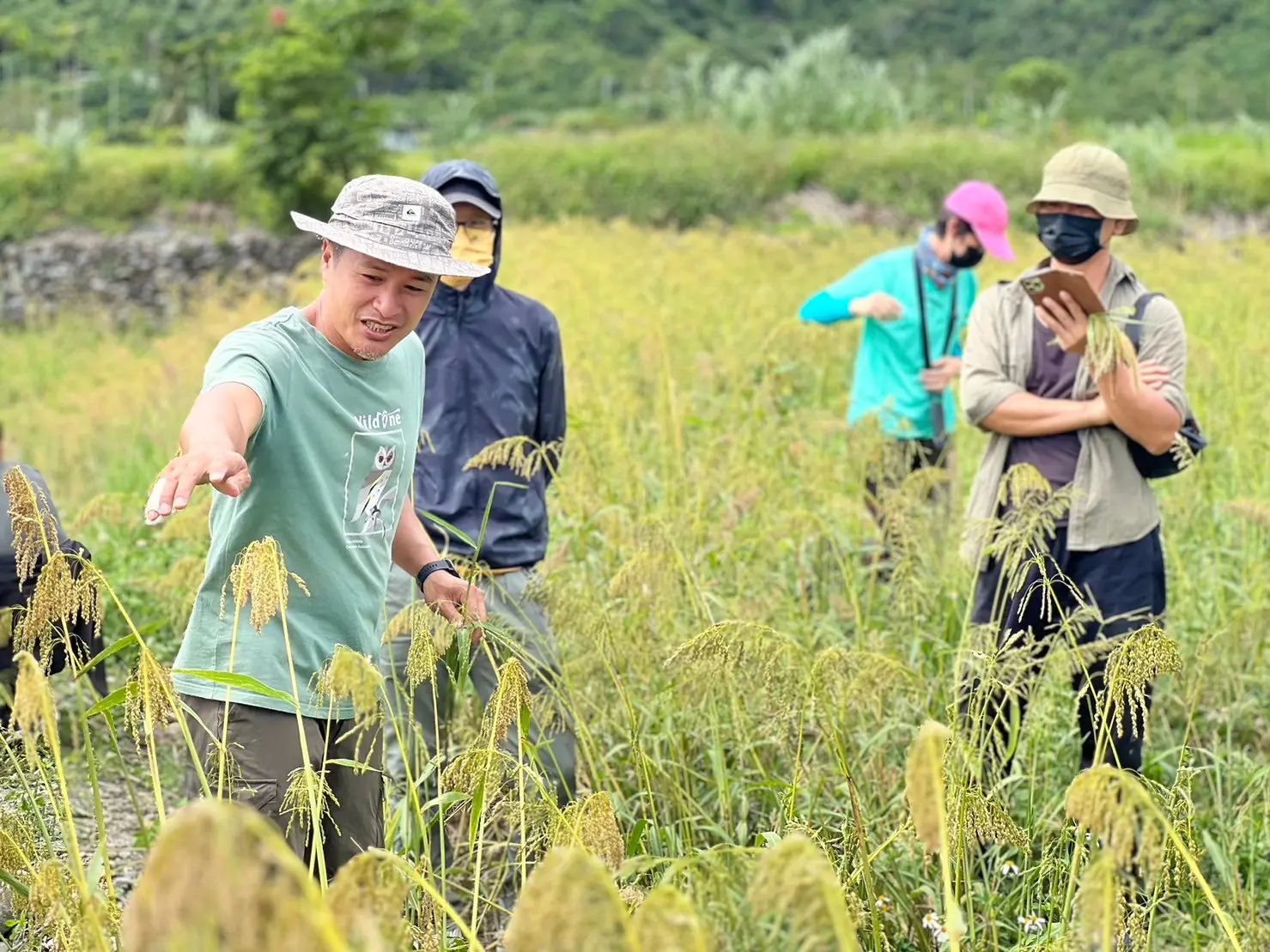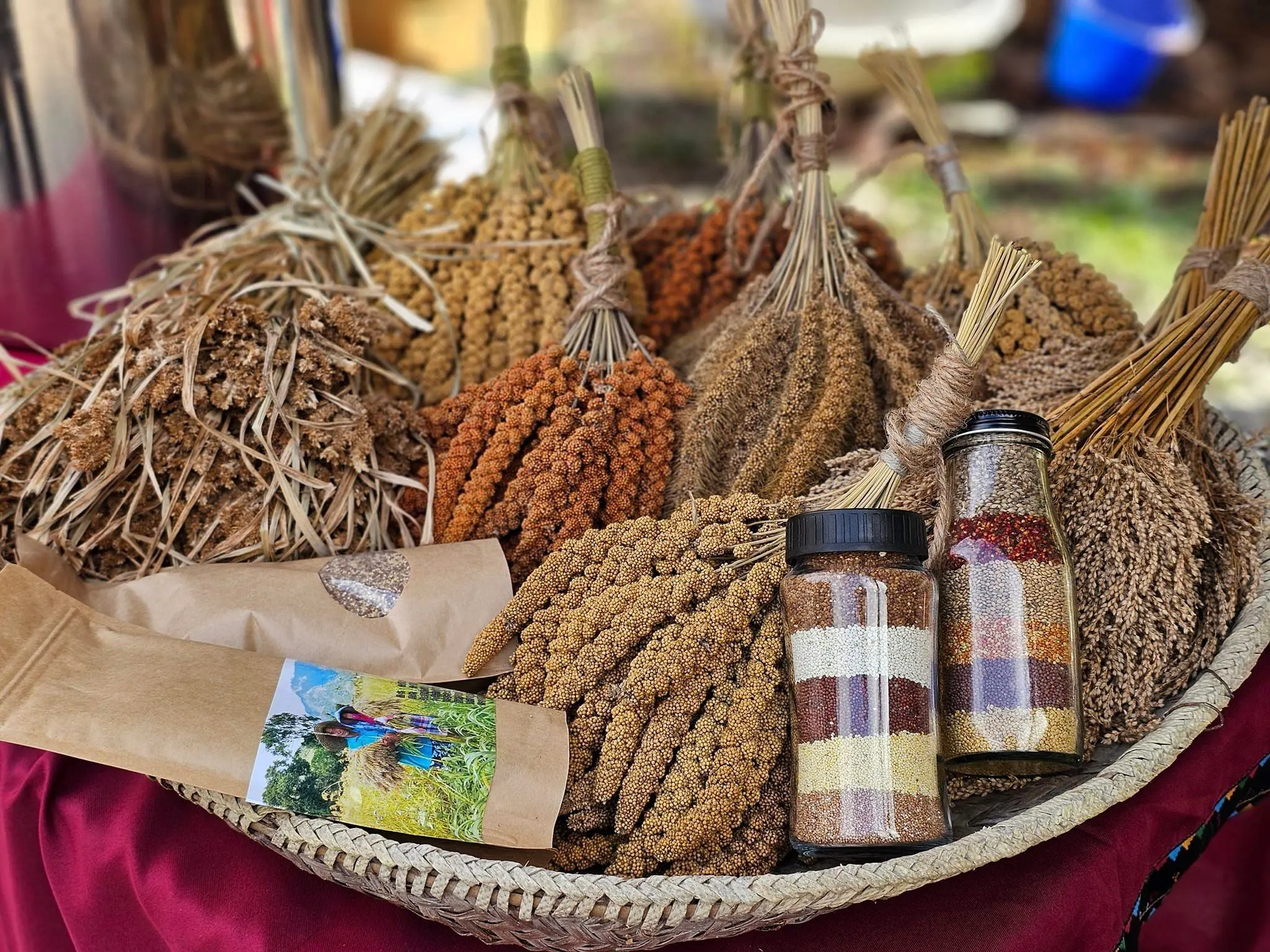
(Photo Credit: 以斯馬哈散農莊)
In the mountainous regions of eastern Taiwan, a unique grain called Taiwan oil millet (TOM) is experiencing an exciting revival. Traditionally grown by the Bunun tribe, TOM resembles reed grass and has grains covered with fine hairs known as trichomes. It is rich in protein, calcium, magnesium, and various plant-based amino acids, earning it the reputation of a “superfood of the future.” However, due to the westernization of diets and its low economic value, this precious grain was once on the brink of extinction. Fortunately, in recent years, local tribes have dedicated efforts to revitalize TOM, allowing it to flourish once again in Taitung’s forests. This resurgence not only revives traditional farming practices but also breathes new life into the local indigenous culture.

(Photo Credit: Taitung County Government)
In Taitung County’s Yanping Township, Bunun father and son Chiu Kuei-chun and Chiu Hsiao-cheng have been pivotal in the revival of TOM. In 2014, driven by a vision to restore this traditional crop, they began cultivating TOM on the hillside near their village. After nearly a decade of efforts, their TOM fields have expanded to 1.2 hectares and are thriving.
The revival process hasn’t all been smooth sailing though. Taitung’s variable climate and extreme weather conditions have presented numerous challenges for growing TOM. However, the Chiu father and son duo have successfully adapted TOM to the local environment by combining traditional wisdom with modern agricultural techniques. TOM’s strong adaptability and resilience are key reasons why it has been able to take root once again in Taitung’s mountainous regions.
The revival of TOM is not just about restoring agricultural production; it is also a vital medium for preserving Bunun culture. For the Bunun people, TOM represents the “taste of memory,” carrying their deep connection with the land and their ancestors.

(Photo Credit: 以斯馬哈散農莊)
Bunun restaurateur Chiu Chih-wei is actively incorporating TOM into modern cuisine, developing innovative dishes such as TOM salad, TOM risotto, and TOM hand rolls. These creations are not only popular among tourists but also help the younger generation rediscover and enjoy this traditional grain.
Another Bunun chef, Hu Yu-ju, showcased Taiwan oil millet dishes at Terra Madre, the annual Slow Food International Congress in Italy, presenting the charm of Taiwanese indigenous ingredients to the international community. She highlighted that TOM is the world’s smallest popcorn, and when dry-roasted at low temperatures, it achieves a unique crispy texture.
The revival of TOM also has a positive impact on the local ecological environment. As a resilient native crop, TOM cultivation contributes to soil and water conservation and the maintenance of biodiversity. Additionally, TOM fields provide food sources and habitats for wildlife, helping to restore the ecological balance in the mountainous regions.

(Photo Credit: 蓋亞那工作坊kaiana)

(Photo Credit: 富興米店)
It’s worth noting that the revival of TOM aligns with global trends. The United Nations Food and Agriculture Organization designated 2023 as the “International Year of Millets” to raise awareness about the nutritional value and ecological benefits of traditional grains like millet. As a unique millet variety native to Taiwan, TOM’s revival carries significant global importance.
Additionally, Taiwan’s long-standing native seed conservation programs have provided crucial support for the revival of traditional crops like TOM. These efforts not only protect valuable genetic resources but also offer new options for addressing climate change and food security challenges.
The successful revival of TOM also brings hope for the revitalization of Taitung’s Austronesian culture. However, several challenges remain for the continued development of this endeavor. Key issues to address include how to expand cultivation scale, increase economic benefits, and attract more young people to participate in the cultivation.

(Photo Credit: 以斯馬哈散農莊)
The return of TOM to the mountains is not just a revival of a grain, but a green renaissance of Taitung’s Austronesian culture. It symbolizes the integration of traditional wisdom and modern technology, showcasing the potential for harmonious coexistence between people and nature. This process highlights a beautiful vision of cultural preservation, ecological protection, and sustainable development. With increasing attention and participation, TOM is expected to continue thriving in Taitung’s forests, bringing even more hope to the land.
Learn more about and experience Austronesian culture.




